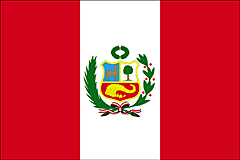Selling online from North America to Latin America
A growing number of U.S. online retailers and consumer brand manufacturers are taking that challenge on by setting up shop and selling online in Latin America.
It wasn’t quite the same as graduating from the e-commerce school of hard knocks, but after six years of trial and error Tradercom USA Inc. has learned some valuable lessons about what works—and what doesn’t—in selling online in Latin America.
In 2006, Tradercom CEO Federico Torres set out to build an online retailing business in Latin America from a base in the U.S. To carve out a niche in Latin America’s growing business-to-consumer e-commerce market, which eMarketer estimates will grow about 110% from $29.70 billion in 2011 to $62.42 billion in 2016, Tradercom had ambitious plans to build a web store in multiple countries and offer steep discounts on well-known American products such as Fossil watches and Weber grills that are not always available through merchants in Latin America.
But selling online in a foreign country is never easy, especially in Latin America, a fast-growing and still-developing e-commerce arena where U.S. merchants face several substantial barriers to entry, including big tariffs and government red tape, sketchy local delivery options, and plenty of cultural differences. “There is a huge opportunity for U.S. web merchants such as us to develop a significant e-commerce business in Latin America, but there are significant challenges that we had to work our way through.” Torres says. “It took us a long time, lots of patience and a willingness to always try a new approach to build up a steady base of shoppers.”
Today Tradercom is an established and growing online retailing company. The e-retailer carries a web inventory of about 100,000 SKUs and sells online in Argentina, Brazil, Chile, Colombia, Ecuador, Mexico, Peru and Venezuela. Sales for the web-only retailer are on track to reach $8 million in 2012, double its 2011 sales.
Tradercom is one of a growing number of U.S. online retailers and consumer brand manufacturers setting up shop and selling online in Latin America. The market already includes 25 U.S. companies ranked in the Top 300 Latin America, which in 2011 had combined web sales of $1.43 billion, up 32.4% from $1.08 billion in the prior year.
And more North American online retailers are seriously eyeing Latin America for a new international opportunity or expanding their existing base of operations. For example Apple Inc. (No. 11), which has been selling computer hardware online in Latin America for several years, in December 2011 launched an iTunes store with a catalog of 20 million song titles for Brazil and 15 other countries in Latin America.
Consumers in Latin America also are big fans of mobile commerce and social media, and looking to conveniently shop online for the products they can’t find in local stores, says Kent Allen, principal and founder of The Research Trust, a San Francisco-based e-commerce and retailing industry research firm with clients in the U.S. and Latin America. “There’s only a handful of global e-commerce markets left where there are still lots of ground-floor opportunities to be the next category-killer web store, hot niche player or even the next Amazon, and that’s Latin America,” Allen says. “E-commerce in Brazil, Mexico and other parts of the region are still in an early growth stage and that’s attracting the attention of lots of U.S. merchants.”
Source: Internet Retailer



